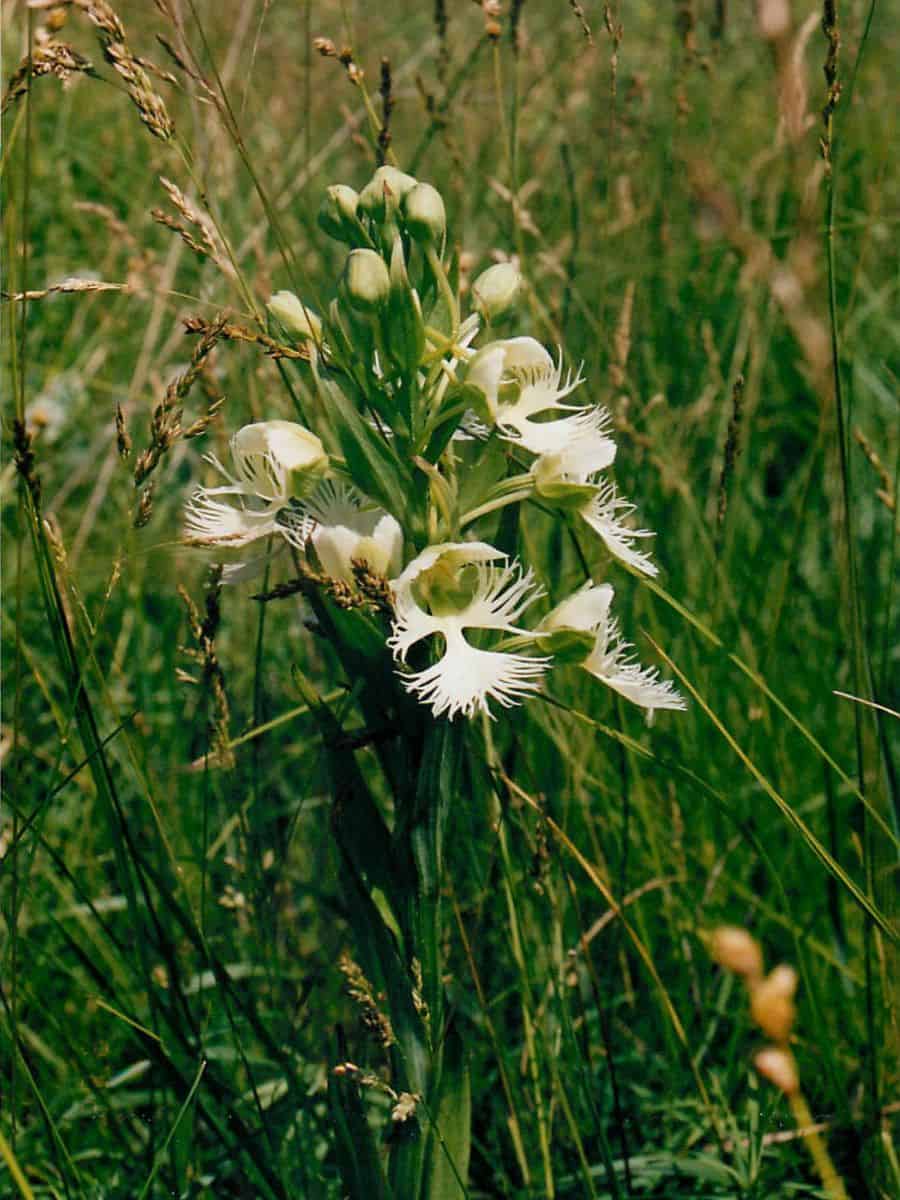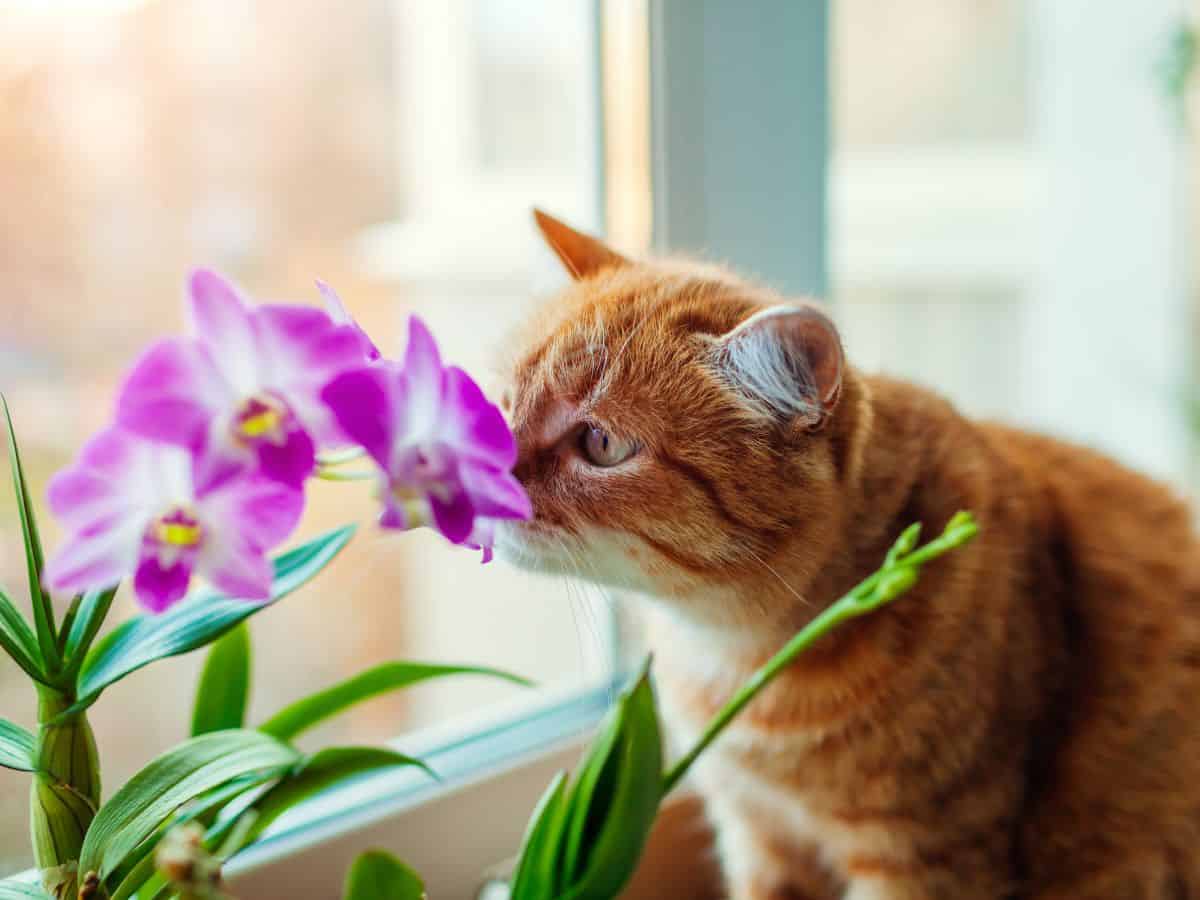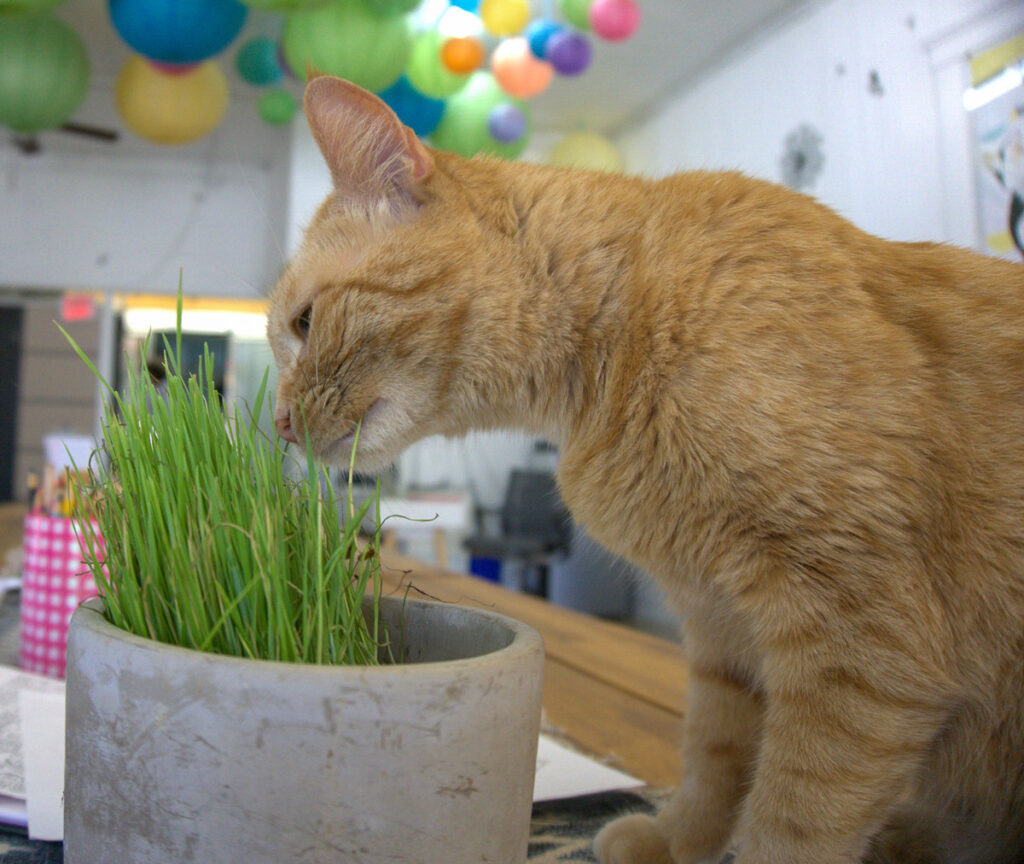Orchids are some of the most popular and elegant houseplants, boasting a wide range of colors, shapes, and sizes. They are admired for their stunning blooms and often become a beautiful centerpiece in homes.
However, many cat owners worry about the potential health risks that their beloved houseplants might pose to their feline companions. One question that often arises is: are orchids toxic to cats?
Orchids: A Brief Overview
With over 28,000 species of orchids, these flowering plants comprise one of the largest and most diverse plant families in the world.

Orchids (Orchidaceae family) can be found in almost every habitat except glaciers and thrive in various habitats, including rainforests, grasslands, and mountain meadows. Some of the most popular orchid varieties grown indoors include Phalaenopsis (moth orchids), Dendrobium, Cattleya, and Oncidium.
Orchids and cats
For the most part, orchids are considered non-toxic to cats as well as to dogs and horses, according to the American Society for the Prevention of Cruelty to Animals (ASPCA).

The ASPCA maintains an extensive list of toxic and non-toxic plants for cats. According to their database, all variety of orchids in their database are listed as non-toxic to cats. However, it is essential to exercise caution with plants in general, even ones deemed safe for cats.
It’s also very important to be aware that pesticides and fertilizers on plants can also trigger an adverse reaction in cats.
Cats and plants: risks to look out for
While orchids are unlikely to pose a serious threat to your cat’s health, it is crucial to be aware of potential risks and symptoms of toxicity or adverse reaction to any plants your cat might ingest.

Cats are naturally curious and may be tempted to chomp on the leaves of your house plants.
Signs that your cat is having a bad reaction to a plant:
- Vomiting
- Diarrhea
- Excessive drooling
- Loss of appetite
- Lethargy
- Difficulty breathing
- Rapid or irregular heartbeat
If your cat exhibits any of these symptoms after ingesting an orchid or any other plant, seek immediate veterinary assistance. Prompt intervention can make a significant difference in your cat’s recovery.
Tips for managing a household with plants and cats
To ensure your cat’s safety and well-being, follow these tips to prevent accidental ingestion of potentially toxic house plants:
Research before you buy
Before introducing a new orchid or houseplant to your home, research its potential toxicity to cats. Check the ASPCA’s list of toxic and non-toxic plants for cats or consult with your veterinarian for guidance.
Keep plants out of reach
Place your orchids and other houseplants in areas that are inaccessible to your cat. Consider hanging plants, placing them on high shelves, or using plant stands to keep them out of your cat’s reach.
Train your cat
Teach your cat to stay away from houseplants by using a combination of positive reinforcement and deterrents. Reward your cat with treats or praise when they leave the plants alone, and use products like bitter-tasting sprays or motion-activated devices to deter them from approaching the plants.
Provide safe alternatives
Offer your cat safe plant alternatives to chew on, such as cat grass, catnip, or silver vine.
These plants can provide a safe and enjoyable outlet for a cat’s natural instincts to chew and explore.

Monitor your cat
Keep an eye on your cat’s behavior around houseplants. If you notice them showing interest in your orchids or other plants, take steps to redirect their attention to a more appropriate activity or playtime.
Be prepared for emergencies
Keep the contact information for your veterinarian and the ASPCA Animal Poison Control Center (888-426-4435) readily available in case of an emergency. Knowing who to call can save valuable time if your cat ingests a potentially toxic plant.
Educate yourself on first aid
Familiarize yourself with basic first aid for cats and learn how to recognize the signs of plant toxicity. This knowledge can help you take appropriate action in case of an emergency and potentially save your cat’s life.







